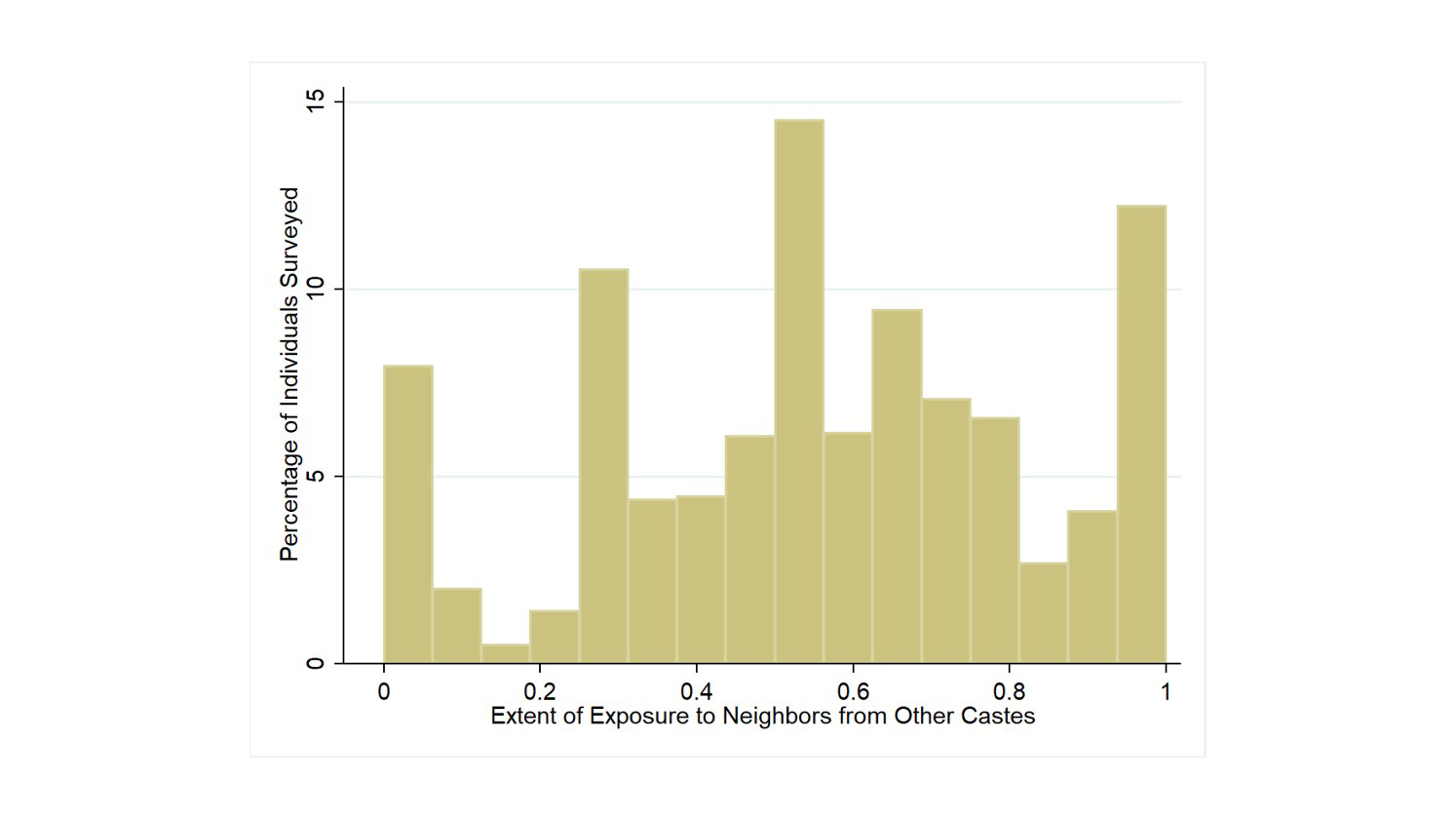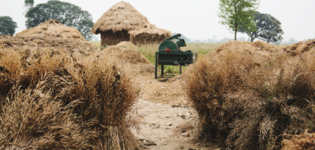Blog
'Love thy neighbour'?
Evidence from a randomized neighbourhood relocation policy in India
Caste in India plays an instrumental role in determining access to education, jobs, public spaces, and social networks. For instance, despite state governments providing incentives to encourage intercaste marriage, only 4.9% of marriages in India take place outside caste . While numerous affirmative action policies aim to integrate and put an end to caste divides (see Munshi 2017 or Bagde et al. 2016), there has been an increase in caste-based segregation in Indian cities.
Facilitating intercaste contact may help to reduce caste-based prejudice and facilitate integration. In a recent paper, I found strong evidence that this may be the case. For my study, I use a slum relocation policy in the city of Pune, India, as a natural experiment to answer the following question: Does changing the caste diversity in one’s immediate neighbourhood affect individuals’ attitudes towards other groups?
Urban slum relocation policies in India are not uncommon. They are often designed with an aim to eradicate slums and provide alternative affordable housing to slum dwellers. Particularly in the city of Pune, local government officials have identified slums for demolition, targeting those located in environmentally fragile zones within the city and those infringing on government land (Pune Municipal Corporation 2006). As a side effect, relocation changes the composition of the neighbourhoods slum dwellers are moved to, with potential benefits to society. There is some evidence from other countries that relocation policies could also have significant impacts on the future outcomes of those who are relocated.
The relocation policy I used for my study randomly assigned housing units from two relocation sites (Figure 1) to slum dwellers. Households are not allowed to choose their unit, allowing for exogenous variation in the caste composition of neighbouring households. I use administrative data on the assignment to exploit this variation (Figure 2) and measure exposure to neighbours from other castes.

Source: Bhattacharya, S. (2021). ‘Intergroup Contact And Its Effects On Discriminatory Attitudes: Evidence From India’. WIDER Working Paper 2021/42. Helsinki: UNU-WIDER.
To elicit responses on attitudes as well as friendships within the neighbourhood, I collected data on 692 adults (219 households). The attitudes I measure fit into two broad categories: (i) trust, which includes general trust and intercaste trust, and (ii) caste attitudes, which include beliefs about intercaste marriage, importance of caste, caste injustice, and support for affirmative action. I also collected information on past and present friendships, allowing me to observe the caste composition of respondents’ friends.
Figure 1: Distribution of individuals exposed to other caste neighbours

More exposure, more acceptance
The World Values Survey for India shows that about 77% of the population are distrusting. In my sample, 93% of respondents claim that they are trusting in nature. In contrast, when asked a second question on whether they trusted members of other castes, only 59% of the respondents replied in the affirmative. I find that a one standard deviation increase in exposure to neighbours from other castes results in a 9.6 percentage point increase in trust for members of other castes. This is consistent with other evidence which finds that trust increases with increased exposure to other social groups (see for example Vezzali et al. 2014 or Finseraas et al. 2019).
Intercaste marriage in the state of Maharashtra, where the city of Pune is located, is as low as 3.7%. To understand the attitudes towards intercaste marriage among respondents, I first ask for the extent of support towards a hypothetical law banning intercaste marriage in India. Twenty per cent of the respondents are in support of a ban on intercaste marriage. A one standard deviation increase in exposure to neighbours from other castes increases opposition to the discriminatory ban by 4.8 percentage points. It is possible that respondents may frame their responses based on their perception of the enumerator’s views. In an attempt to better understand the true preferences of the respondent, I then check for the extent of support to intercaste marriage within the respondent’s own family. On average, 54.2% of respondents support intercaste marriage within their own family. Exposure to more diverse neighbours improves support for intercaste marriage within an individual’s family by 7.2 percentage points.
When living among more diverse caste neighbours, individuals tend to believe that caste injustice is growing. Anecdotes from the field suggest that press coverage of caste-based violence may have played a role in forming this perception. In response to questions on the importance individuals attach to caste identities and on their support for affirmative action, I find negative but imprecise effects from greater exposure.
Do friendships drive favourable attitudes?
Individuals may have become more accepting simply because they now have more friends from other castes, due to increased exposure. Using information I collected on individual’s past and present friendships, I explore the role that friendships play in promoting more favourable attitudes. I ask for their five closest friends within the building, and how many people they knew from their previous residence. Results show that being exposed to more neighbours from other castes does not change the caste composition of an individual’s friends. This suggests that prosocial attitudes may be facilitated simply through proximity to other groups, instead of being affected by changes in individuals’ inner friend circles.
Policy implications
From a policy perspective, the results in my paper have implications for the design of housing programmes, and the specific role that linguistic or ethnic composition in neighbourhoods—sometimes called neighbourhood effects—can play in reducing discriminatory attitudes within a community. While reallocating people to live in unfamiliar settings may come with costs, such as loss of previous friendships, there may be substantial benefits to living close to members of other social groups (Bazzi et al. 2019). There is a need to examine the potential costs and benefits, both explicit and implicit, of such programmes. My findings throw light on the reintegrating effects of housing policies, which may serve as a potential tool to reduce intergroup prejudice. Future research seeks to examine the longer-term effects of exposure to caste diversity on both behaviours and attitudes, to examine whether these effects grow stronger with time.
The views expressed in this piece are those of the author(s), and do not necessarily reflect the views of the Institute or the United Nations University, nor the programme/project donors.
 Join the network
Join the network




